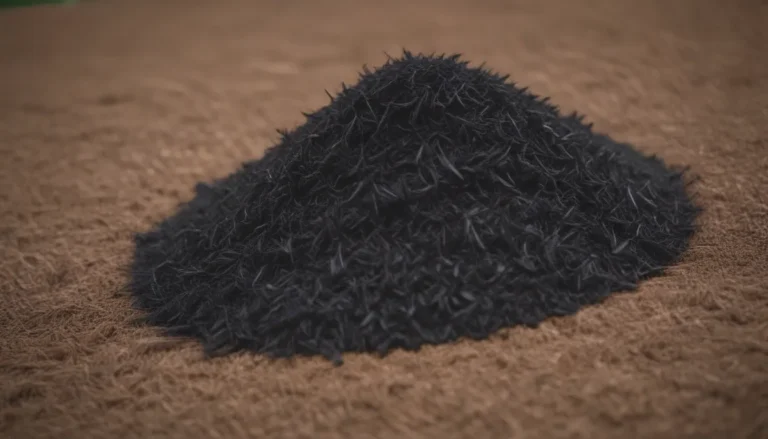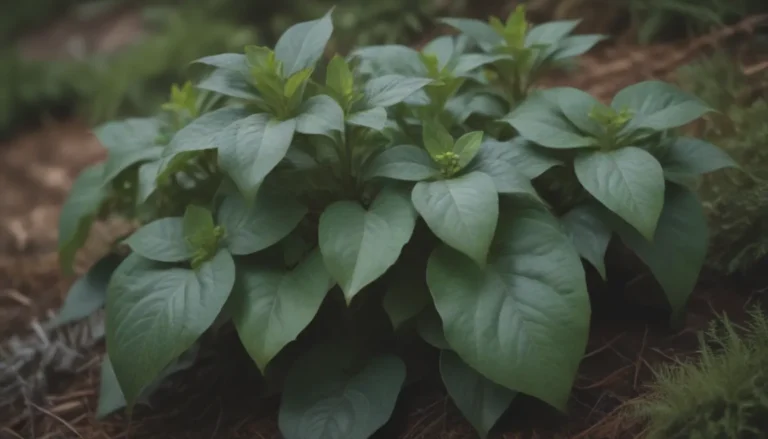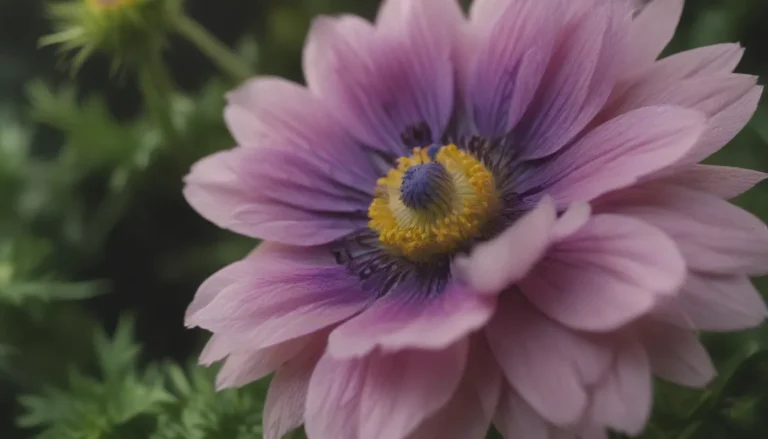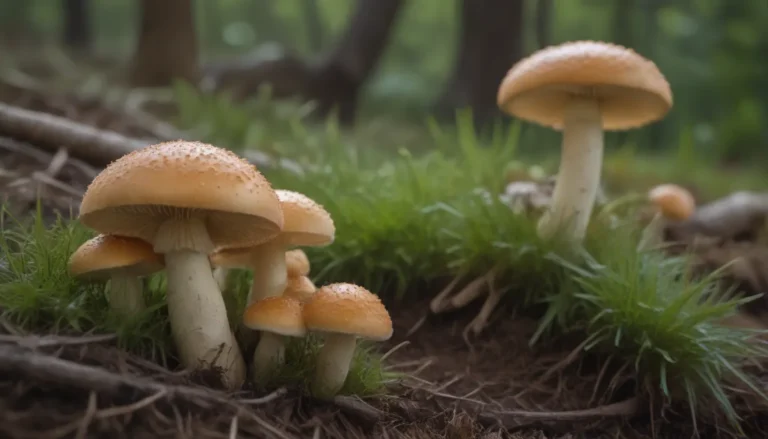Enhancing Your Vegetable Garden with Flowers: 17 Best Choices

Are you looking to take your vegetable garden to the next level? Consider incorporating flowers into your garden beds! Not only do flowers add beauty and charm to your garden space, but they also offer a host of benefits that can help your vegetables thrive. From attracting beneficial insects to repelling pests and improving soil health, planting flowers alongside your veggies can make a significant difference in the overall success of your garden.
In this comprehensive guide, we’ll explore 17 of the best flowers to enhance your vegetable garden. These flowers not only serve as beautiful additions to your garden landscape but also provide valuable support to your vegetable plants. Let’s dive in and discover the benefits of planting flowers in your vegetable garden.
Why Plant Flowers in the Vegetable Garden?
Planting flowers in your vegetable garden is an excellent strategy to create a thriving and harmonious ecosystem. Flowers offer a range of benefits that can help your vegetables flourish and increase your overall garden yield. Here are some key reasons why you should consider adding flowers to your vegetable garden:
- Inviting beneficial insects: Flowers attract beneficial insects like bees, ladybugs, and lacewings, which help pollinate your plants and control pest populations.
- Repelling and trapping pests: Certain flowers have natural pest-repelling properties that can help protect your vegetable plants from common garden pests.
- Attracting pollinators: Flowers attract pollinators like bees and butterflies, which are essential for the pollination of many vegetable crops.
- Improving soil: Some flowers contribute nutrients to the soil and help improve soil health over time.
- Preventing predators: Flowers can act as decoy plants, diverting pests away from your vegetable crops and protecting them from damage.
- Improving appearance: Planting flowers in your vegetable garden adds color, texture, and visual interest, creating a more vibrant and inviting garden space.
Now that we understand the benefits of planting flowers in the vegetable garden, let’s explore 17 amazing flower choices that can elevate your garden to new heights.
1. Borage
Borage (Borago officinalis) is a versatile herb that not only adds beauty to your garden but also serves as an excellent companion plant for your vegetables. The vibrant blue or pink flowers of borage attract bees and other pollinators, while also offering a subtle cucumber flavor that is edible for both humans and wildlife. Consider interplanting borage with tomatoes and squash to create a beneficial trio in your garden.
- USDA Growing Zones:
- Color Varieties: Blue, Pink
- Sun Exposure: Full sun
- Soil Needs: Well-draining, fertile soil
- Companion Vegetables: Tomatoes, Squash
2. Nasturtium
Nasturtiums (Tropaeolum majus) are cheerful flowers that thrive in cooler temperatures and provide protection against squash bugs and beetles in the garden. These edible flowers and leaves are favored by aphids, making them a great trap crop to protect your vegetables. Plant nasturtiums after scarifying the seeds for better germination and enjoy their vibrant blooms throughout the growing season.
- USDA Growing Zones:
- Color Varieties: Various
- Sun Exposure: Full sun to partial shade
- Soil Needs: Well-draining soil
- Companion Vegetables:
3. Pot Marigold
Pot marigold (Calendula officinalis) is a stunning flower with brilliant orange petals that brighten up your garden space. This edible flower has both pest-repelling and pest-attracting properties, making it a versatile companion plant. Use pot marigold as a trap crop to divert aphids away from your vegetable plants and maintain a balance in your garden ecosystem.
- USDA Growing Zones:
- Color Varieties: Orange
- Sun Exposure: Full sun to partial shade
- Soil Needs: Well-draining soil
- Companion Vegetables:
4. Cosmos
Cosmos (Cosmos bipinnatus) are easy-to-grow flowers that bloom profusely and attract beneficial insects to the garden. These colorful blooms help draw in green lacewings, a natural predator of aphids and other soft-bodied insects, helping to control pest populations in your vegetable garden. Consider planting cosmos alongside your vegetable plants to create a thriving garden ecosystem.
- USDA Growing Zones:
- Color Varieties: Various
- Sun Exposure: Full sun
- Soil Needs: Well-draining soil
- Companion Vegetables:
5. Lavender
Lavender (Lavandula sp.) is a beloved herb known for its fragrant blooms and natural pest-repelling properties. Planting lavender in your vegetable garden can help deter deer, ticks, moths, and other pests that may threaten your crops. The beautiful blooms of lavender attract pollinators and offer a soothing aroma to your garden space.
- USDA Growing Zones:
- Color Varieties: Purple
- Sun Exposure: Full sun
- Soil Needs: Well-draining soil
- Companion Vegetables:
6. Marigold
Marigolds (Tagetes sp.) are versatile flowers that provide dual benefits by repelling pests and adding beauty to the garden. These vibrant blooms help deter rabbits, squash bugs, thrips, and other common garden pests, making them an excellent companion plant for your vegetables. Consider interplanting marigolds with beans or squash to protect your crops from harmful insects.
- USDA Growing Zones:
- Color Varieties: Yellow, Orange
- Sun Exposure: Full sun
- Soil Needs: Well-draining soil
- Companion Vegetables: Beans, Squash
7. Sunflower
Sunflowers (Helianthus annuus) are iconic flowers that not only add a pop of color to your garden but also serve as trellises for climbing plants. These nectar-rich blooms attract pollinators and beneficial insects, although they may also draw in squirrels looking for seeds. Plant sunflowers strategically in your garden to support your vegetable plants and create a dynamic garden landscape.
- USDA Growing Zones:
- Color Varieties: Yellow
- Sun Exposure: Full sun
- Soil Needs: Well-draining soil
- Companion Vegetables:
8. Sweet Pea
Sweet peas (Lathyrus odoratus) are fragrant flowers that attract pollinators and beneficial insects to the garden. While the seeds of sweet peas are toxic to humans, they are a favorite food source for many garden creatures. Plant sweet peas alongside edible peas and pole beans to add beauty and diversity to your vegetable garden while supporting pollinator populations.
- USDA Growing Zones:
- Color Varieties: Various
- Sun Exposure: Full sun to partial shade
- Soil Needs: Well-draining soil
- Companion Vegetables: Peas, Beans
9. Zinnia
Zinnias (Zinnia elegans) are nectar-rich flowers that attract bees, butterflies, and other pollinators to the garden. These vibrant blooms can be used as cut flowers to add color to your home while also supporting pollinator populations in your vegetable garden. Plant zinnias strategically in your garden to attract beneficial insects and enhance the overall beauty of your space.
- USDA Growing Zones:
- Color Varieties: Various
- Sun Exposure: Full sun
- Soil Needs: Well-draining soil
- Companion Vegetables:
10. Pansy
Pansies (Violaxwittrockiana) are adorable flowers that thrive in cool weather and offer a colorful addition to the garden. These fast-growing flowers can be used as cover crops to retain moisture in the soil and attract beneficial insects like ladybugs and hoverflies. Consider planting pansies in your fall-to-spring vegetable garden to add beauty and functionality to your space.
- USDA Growing Zones:
- Color Varieties: Various
- Sun Exposure: Full sun to partial shade
- Soil Needs: Well-draining, slightly acidic soil
- Companion Vegetables:
11. Petunia
Petunias (Petunias spp.) are popular flowers known for their trumpet-shaped blooms and natural pest-repelling properties. These fast-growing annuals help deter pests like asparagus beetles, leafhoppers, and tomato worms, making them valuable additions to the vegetable garden. Plant petunias around the perimeter of your garden to protect your vegetable plants from harmful insects.
- USDA Growing Zones:
- Color Varieties: Various
- Sun Exposure: Full sun
- Soil Needs: Well-draining soil
- Companion Vegetables:
12. Dahlia
Dahlias (Dahlias spp.) are late-blooming flowers that attract butterflies and other beneficial insects to the garden. These lush blooms add beauty and color to your garden landscape while supporting pollinator populations. Plant dahlias in a sunny spot with well-draining soil and provide adequate fertilizer to encourage blooming throughout the season.
- USDA Growing Zones:
- Color Varieties: Various
- Sun Exposure: Full sun
- Soil Needs: Well-draining soil
- Companion Vegetables:
13. Cornflower
Cornflower (Centaurea cyanus), also known as bachelor’s button, is a striking annual flower that attracts pollinators and adds color to the garden. These deep blue blooms are disease- and pest-resistant, making them ideal companions for vegetable plants. Consider planting cornflowers in your garden to enhance biodiversity and support beneficial insect populations.
- USDA Growing Zones:
- Color Varieties: Blue
- Sun Exposure: Full sun
- Soil Needs: Well-draining soil
- Companion Vegetables:
14. Sweet Alyssum
Sweet alyssum (Lobularia maritima) is a low-growing flower that creates a colorful ground cover in the garden. These perennial flowers attract beneficial insects like ladybugs and hoverflies, which help protect your vegetable plants from pests. Plant sweet alyssum in your garden to add beauty and functionality while supporting a healthy ecosystem.
- USDA Growing Zones:
- Color Varieties: Various
- Sun Exposure: Full sun to partial shade
- Soil Needs: Well-draining soil
- Companion Vegetables:
15. Mums
Hardy mums (Chrysanthemum morifolium) are versatile flowers that offer natural pest protection for your vegetable garden. These colorful blooms can be planted alongside petunias and marigolds to create a powerful barrier against common garden pests. Consider incorporating mums into your fall vegetable garden to enhance pest control and add seasonal color to your space.
- USDA Growing Zones:
- Color Varieties: Various
- Sun Exposure: Full sun
- Soil Needs: Well-draining soil
- Companion Vegetables:
16. Daylily
Daylilies (Hemerocallis spp.) are popular perennials that attract pollinators and hummingbirds to the garden. These easy-to-maintain flowers add beauty and elegance to your garden while serving as effective weed deterrents. Plant daylilies around borders and edges of your vegetable garden to create a natural barrier against weeds and unwanted pests.
- USDA Growing Zones:
- Color Varieties: Various
- Sun Exposure: Full sun
- Soil Needs: Well-draining soil
- Companion Vegetables:
17. Lupine
Lupines (Lupinusxhybrida) are showy flowers that fix nitrogen in the soil, benefiting other nitrogen-loving plants in the garden. These colorful spires attract pollinators and add vibrancy to the garden landscape. Plant lupines in a sunny spot with organically rich soil to promote healthy growth and support a thriving garden ecosystem.
- USDA Growing Zones:
- Color Varieties: Various
- Sun Exposure: Full sun
- Soil Needs: Well-draining soil
- Companion Vegetables:
Flowers to Avoid Near Vegetables
While adding flowers to your vegetable garden can provide numerous benefits, it’s essential to be mindful of which flower varieties may not be suitable for planting near vegetables. Some flowers may compete with vegetables for space, nutrients, and water, or attract pests that can harm your crops. Be cautious when selecting flowers to plant alongside your vegetables and consider the following factors:
- **Avoid planting invasive species that may overtake your vegetable garden.
- **Choose flowers that complement rather than compete with your vegetable plants.
- **Consider the growth habits and requirements of each flower to ensure they will coexist harmoniously with your vegetables.
By selecting the right flowers for your vegetable garden and avoiding incompatible varieties, you can create a thriving and balanced ecosystem that supports the health and vitality of your plants.
In conclusion, adding flowers to your vegetable garden can enhance the beauty, productivity, and overall success of your garden space. By choosing the right flowers and strategically planting them alongside your vegetable crops, you can create a harmonious and biodiverse ecosystem that benefits both plants and wildlife. Experiment with different flower varieties, observe their effects on your garden, and enjoy the colorful and vibrant landscape you’ve created. Happy gardening!





